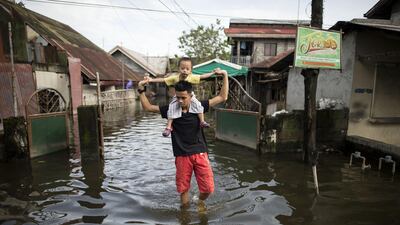Simultaneously this weekend, two illuminating pictures were emerging on opposite sides of the planet. On one side, the US – the richest country the world has ever seen – had two of its southern states hit by tropical storm Florence. "This system is unloading epic amounts of rainfall," said North Carolina governor Roy Cooper, as water levels rose. On the other, agricultural provinces in northern Philippines were struck by Typhoon Mangkhut, hitting small isolated communities and destroying arable land.
At least 12 have died in the US, including a mother and her seven-month old baby; in the Philippines, Mangkhut claimed 25 lives. It shows that brutal weather systems are a leveller; average monthly salaries in the US might be 16 times higher than in the Philippines but storms and weather systems care little for such indicators.
Indeed, the typhoon that has wreaked havoc in the Philippines now poses a deadly threat to prosperous Hong Kong as it tears towards mainland China.
Meanwhile, droughts in the Middle East and Africa continue to worsen.

Although Florence and Mangkhut have made headlines globally, four more tropical cyclones are currently active in the world’s oceans. While it is rare to witness so many storms simultaneously, it is not unheard of in hurricane season.
It is difficult to prove a conclusive link between climate change and the number of storms, largely because comprehensive data on hurricanes only emerged in the 1980s thanks to highly advanced satellites. But while global warming might not increase the prevalence of such weather systems, scientific consensus is clear that climate change is making them worse, because rising ocean temperatures lead to more water in the atmosphere and therefore more rain.
According to one group of researchers at New York's Stony Brook University, half the rain in North Carolina currently is the result of man-made climate change. Meanwhile, the United Nations intergovernmental panel on climate change has "medium confidence" in the linkage.
Florence, Mangkhut and the countless other storms, floods and hurricanes that have claimed lives across the world in recent years are not an indication of a future threat. Rather, the deadly effects of climate change have already arrived and unless major multilateral action is taken to combat it, the death count will continue to rise. Because as the parallel of affluent America and rural Philippines so powerfully demonstrates, nowhere is safe from brutal and deadly weather.

